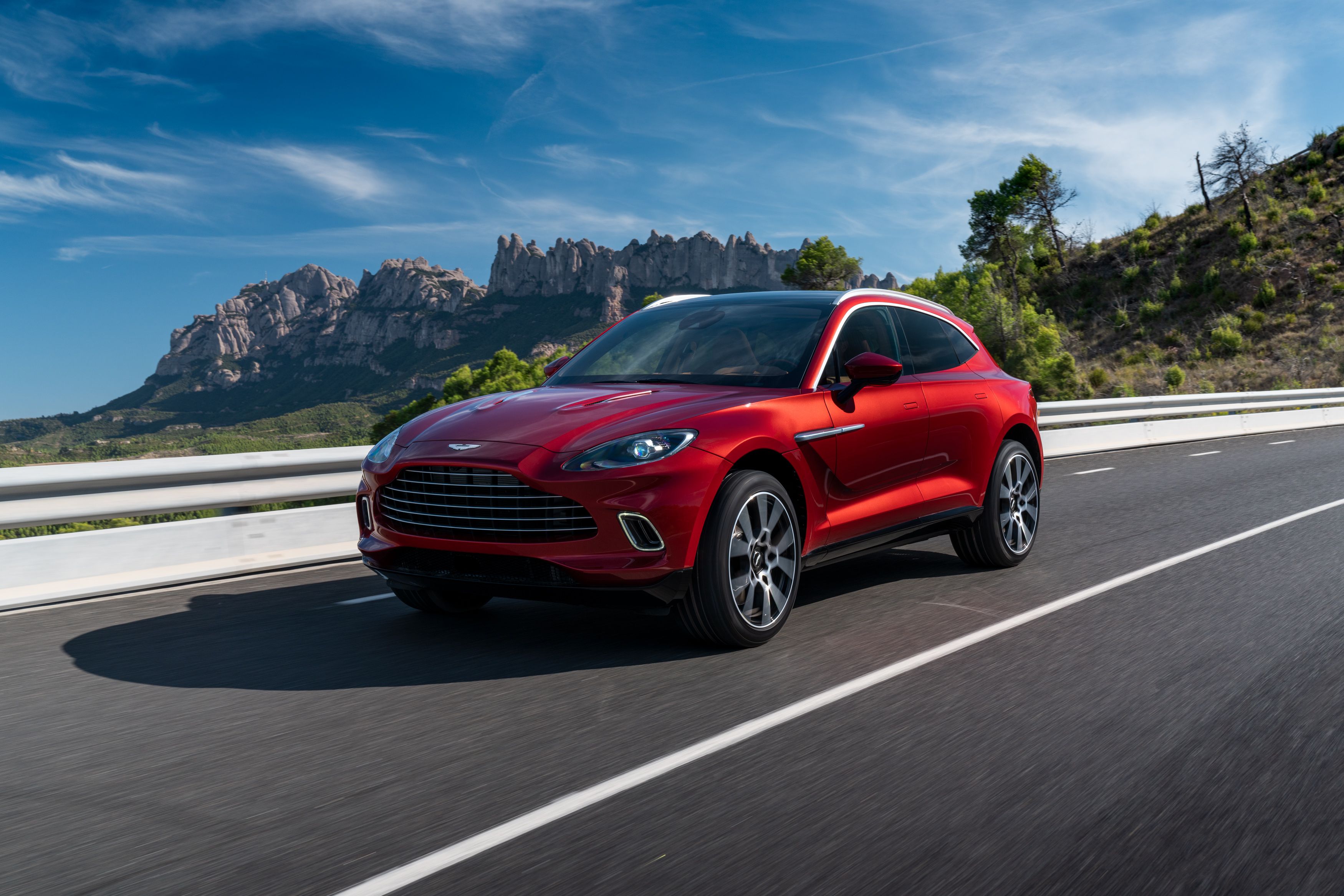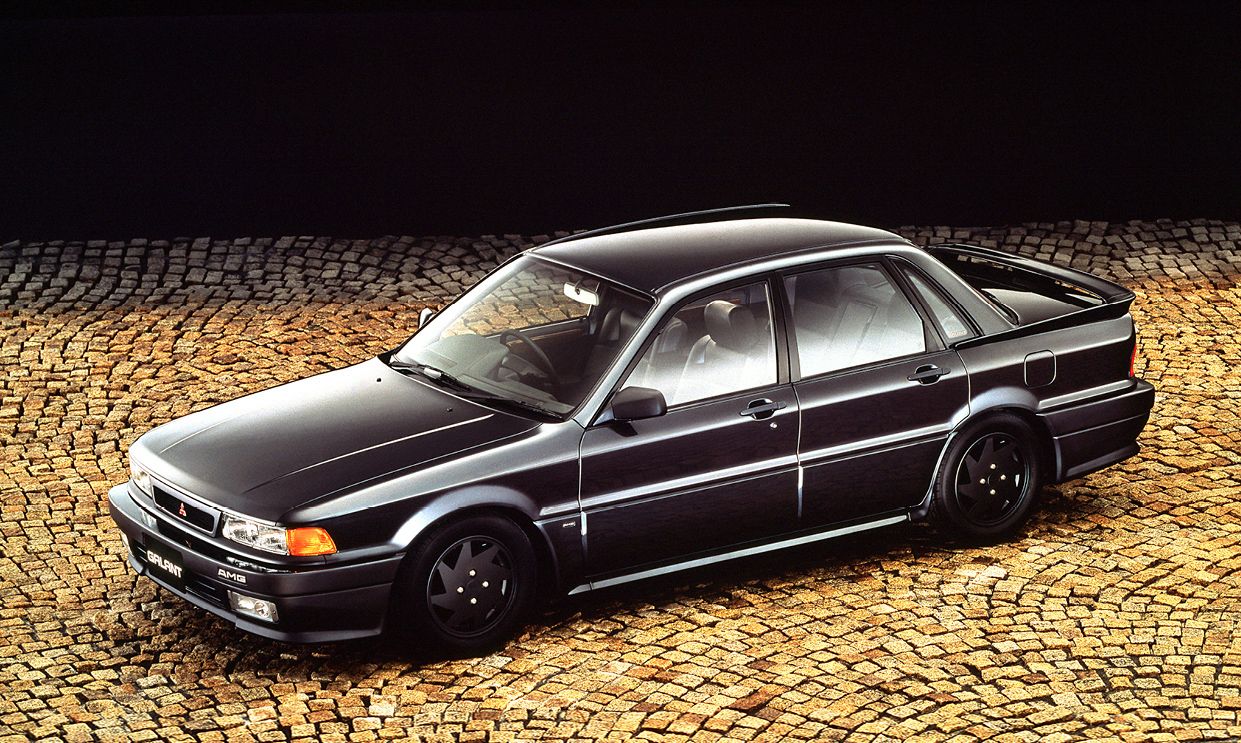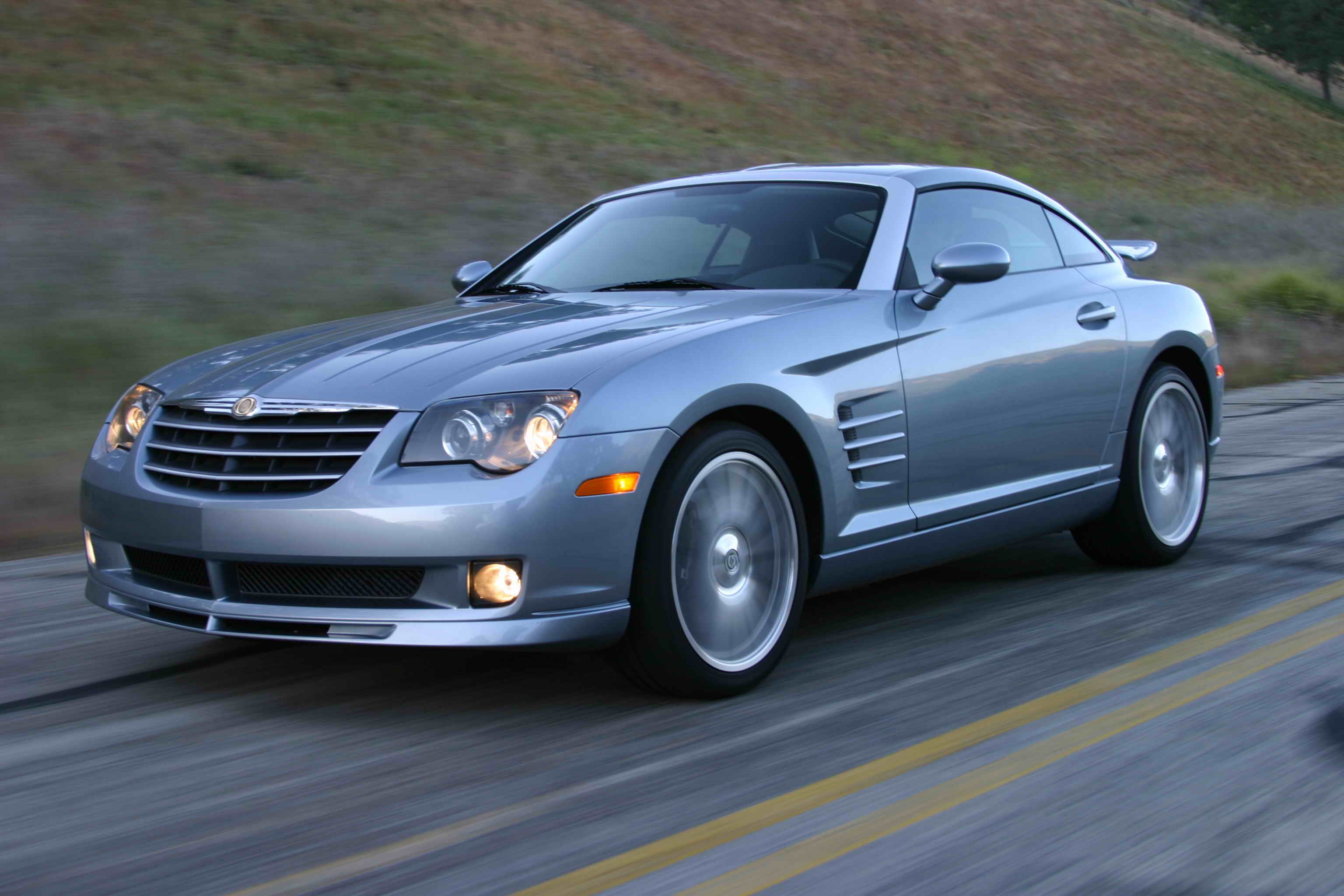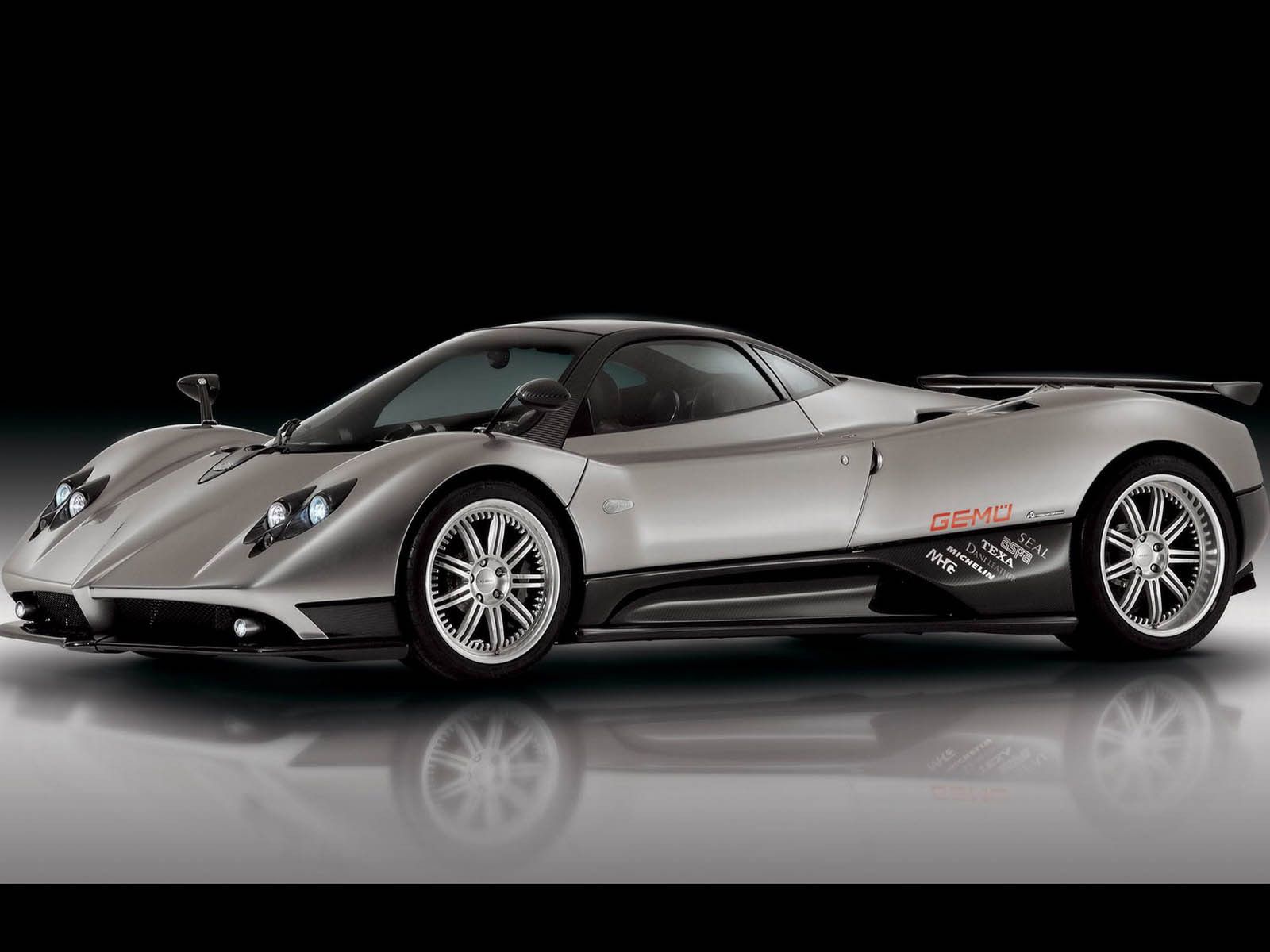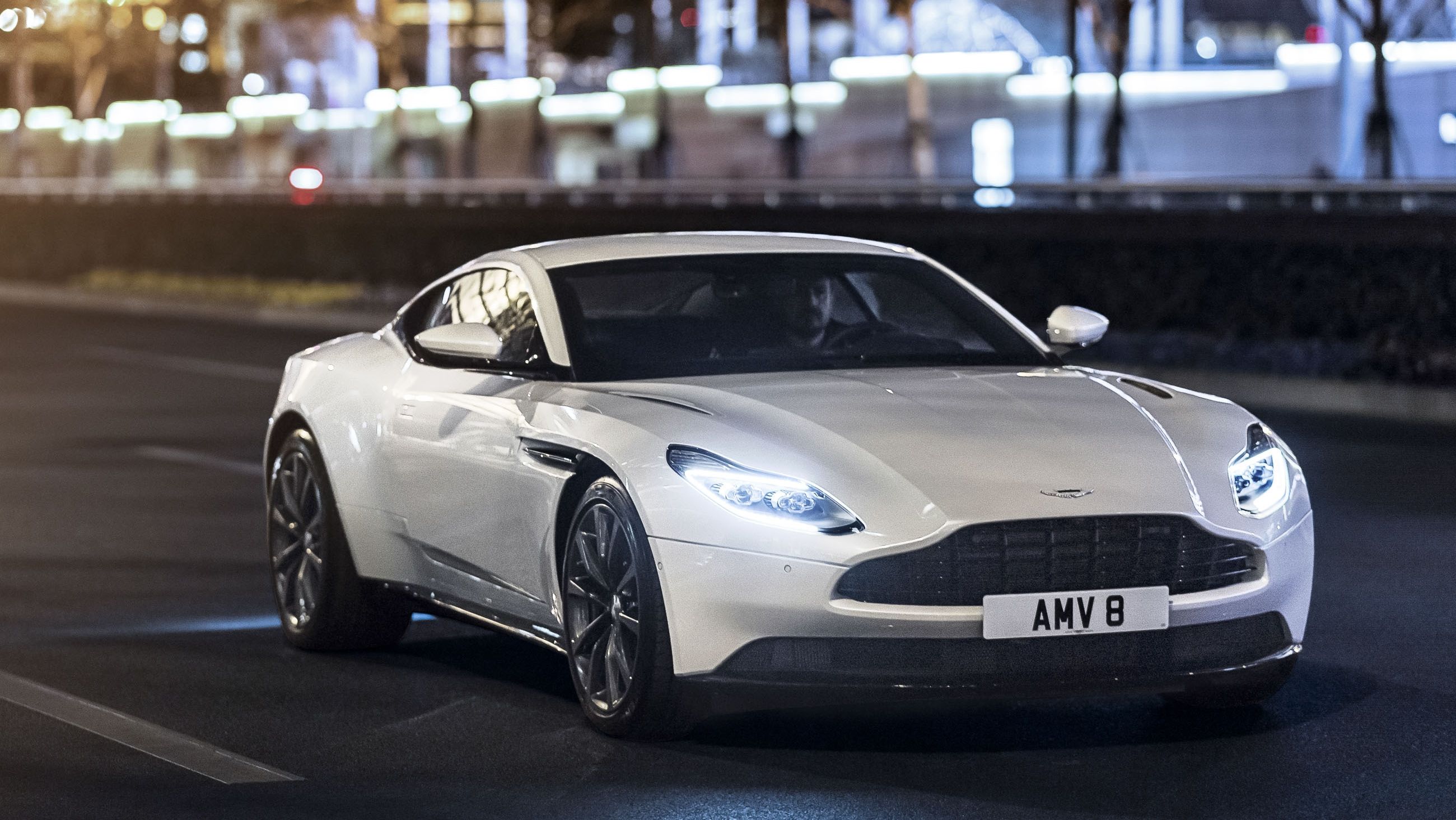There’s no denying that, for decades, the people of AMG have given us and continue to give us some mental machines. Their creations are known for their handcrafted torque monster engines and a rather strong temper. These two elements combined, make the machines from Affalterbach some of the most desirable ones out there. But, in the past, AMG did not work only on Mercedes. Here are some less-known cars, touched by the factory of madness.
Mitsubishi Galant AMG
Most of us know about the Mitsubishi Galant VR4. It’s a turbocharged performance version of an otherwise forgettable economy Japanese sedan. In 1989 there was another performance version, however. The AMG-badged Galant was only for the Japanese market, which explains why it’s been mostly forgotten. It used the same 4G63 2.0-liter inline-four, but the German tuning company modified it so it now revved up to 8,000 RPM. This resulted in 170 horsepower and 141 pound-feet (191 Nm), which was less than the VR-4, but because it was naturally-aspirated it did not have the immense turbo-lag, present in older turbo-engines.
Mitsubishi Galant AMG specifications
|
Engine |
2.0-liter inline-four |
|---|---|
|
Horsepower |
170 HP |
|
Torque |
141 LB-FT |
2005 Chrysler Crossfire SRT-6
The Crossfire is one of the creations born from the Daimler-Chrysler merger. It was based on the Mercedes SLK roadster and shared around 60 percent of its parts. Although the Crossfire is often likened to a dog doing its thing, there’s no denying that in SRT-6 trim, it packs a serious punch.
2005 Chrysler Crossfire SRT-6 specifications
|
Engine |
3.2-liter Mercedes V-6 |
|---|---|
|
Horsepower |
330 HP |
|
Torque |
310 LB-FT |
|
Transmission |
five-speed automatic |
|
0 to 60 mph |
5.3 seconds |
Read our full review on the 2005 Chrysler Crossfire SRT-6
Aston Martin Vantage
It’s no secret that all new V-8-powered Aston Martin models use the 4.0-liter twin-turbo V-8 designed by AMG. This is due to e newly-formed partnership between Mercedes and Aston Martin. The M-177 version of the 4.0-liter V-8 is used in Aston Martin’s smallest sports car – the Vantage. It produces 503 horsepower and 505 pound-feet (685 Nm). This is enough to propel the British sports coupe to 60 mph in 3.4 seconds on its way to 195 mph (314 km/h) top speed. Fun fact: the same M-177 engine is put to work in the Vantage GTE race car, developed for the FIA Championship.
Aston Martin Vantage specifications
|
Engine |
4.0-liter V-8 |
|---|---|
|
Horsepower |
503 HP |
|
Torque |
505 LB-FT |
|
0 to 60 mph |
3.4 seconds |
|
Top Speed |
195 mph |
Read our full review on the Aston Martin Vantage
Pagani Zonda
First released in 1999, the Zonda was Horacio Pagani’s foothold into the market of super-exclusive exotic cars. Over its lifespan, the Zonda had many different versions, but one thing remained fundamentally the same – the engine.
That was enough for a 4.0-second sprint to 60 mph (97 km/h) and a 9.2-second run to 100 mph (161 km/h). The C-12S received a 7.0-liter version of the M-120. Later versions used the AMG M-297, which was still based on the M-120 but was developed for more top-end power. In its most powerful form, the AMG V-12 produced 789 horsepower and 627 pound-feet (850 Nm). This allowed the Zonda to reach speeds of 221 mph (355 km/h).
Pagani Zonda specifications
|
Engine |
AMG V-12 |
|---|---|
|
Horsepower |
444 HP |
|
Torque |
472 LB-FT |
|
0 to 60 mph |
4.0 seconds |
|
0 to 100 mph |
9.2 seconds |
Read our full review on the Pagani Zonda
Aston Martin DBX
We are back with Aston Martin and their first-ever luxury SUV. The model entered production in 2020, and with it Aston Martin has joined the teeming market of performance luxury SUVs. Power is once again entrusted to the 4.0-liter twin-turbo AMG V-8. In the DBX, however, the M-177 produces 542 horsepower and 516 pound-feet (700 Nm). This allows for a 0 to 60 mph print in as little as 4.3 seconds and a top speed of 181 mph (291 km/h). Being an SUV, power goes to all four wheels. The gearbox of choice is a nine-speed automatic.
Aston Martin DBX specifications
|
Engine |
4.0-liter twin-turbo AMG V-8 |
|---|---|
|
Horsepower |
542 HP |
|
Torque |
516 LB-FT |
|
0 to 60 mph |
4.3 seconds |
|
Top Speed |
181 mph |
Read our full review on the Aston Martin DBX
Pagani Huayra
The Pagani Huayra entered production in 2012, but contrary to popular belief, it was not meant to be a successor to the Zonda. Actually, the initial plan was to launch the two cars simultaneously, but due to financial reasons that wasn’t a possibility. As with the Zonda, the Huayra was powered by a V-12 AMG engine.
Pagani Huayra specifications
|
Engine |
V-12 AMG |
|---|---|
|
Horsepower |
720 HP |
|
Torque |
738 LB-FT |
|
0 to 60 mph |
2.2 seconds |
|
Top Speed |
224 mph |
Read our full review on the Pagani Huayra
Aston Martin DB11 V-8 / Volante
We already talked about the connection between Aston Martin and Mercedes-Benz and how the former uses AMG V-8 engines in its lineup. Before the Vantage and certainly before the DBX, the brand’s flagship – DB-11 also made use of the German powerhouse. The same goes for its convertible version – the Volante. In the big British gran tourer, the M-177 4.0-liter V-8 pumps out 503 horsepower at 6,000 RPM and 498 pound-feet (675 Nm) at 2,000 RPM. Since the AMG V-8 is meant to be the base engine for the flagship Aston Martin, it is no match for their newly-developed 5.2-liter V-12. However, it is still enough for a very respectable 4.0 seconds to 60 mph (97 km/h) and a top speed of 186 mph (300 km/h).
Aston Martin DB-11 V-8 / Volante specifications
|
Engine |
4.0-liter V-8 |
|---|---|
|
Horsepower |
503 HP @ 6,000 RPM |
|
Torque |
498 LB-FT @ 2,000 RPM |
|
0 to 60 mph |
4.0 seconds |
|
Top Speed |
186 mph |
Read our full review on the Aston Martin DB11 V-8

